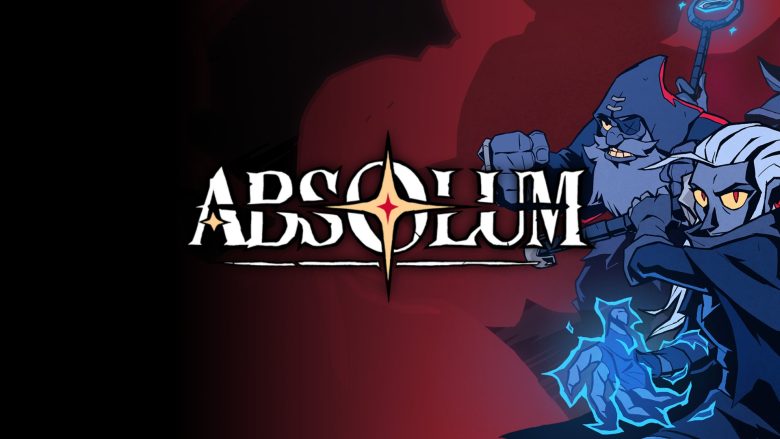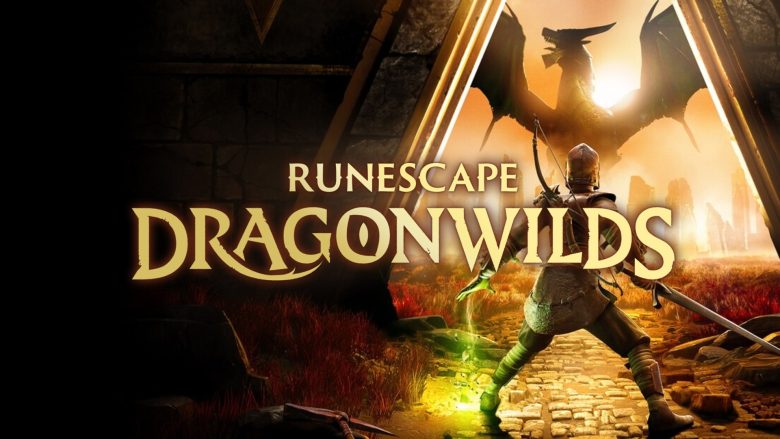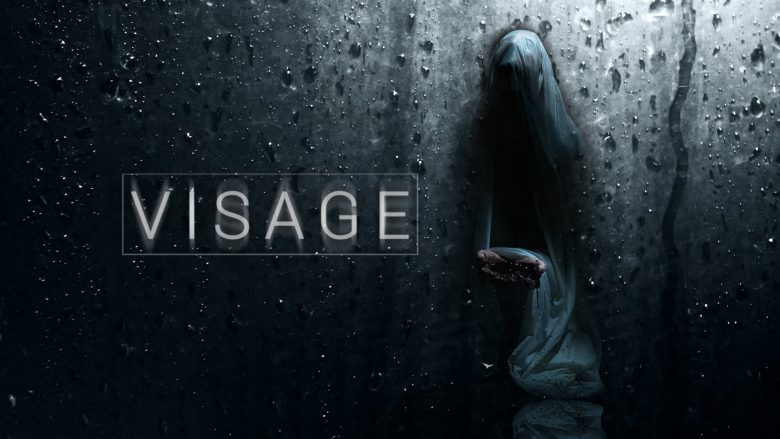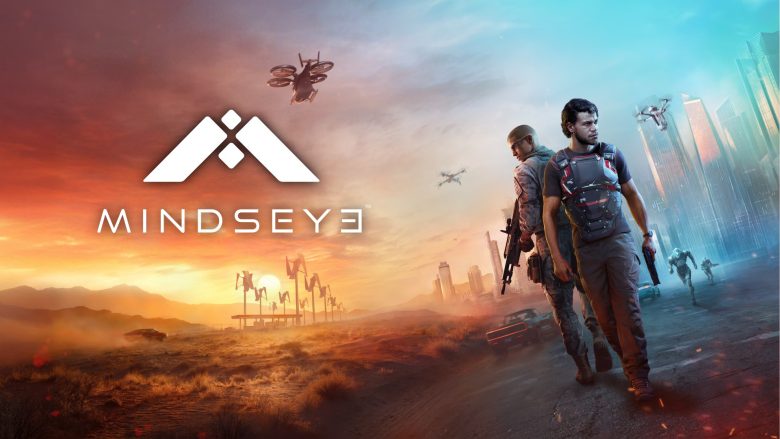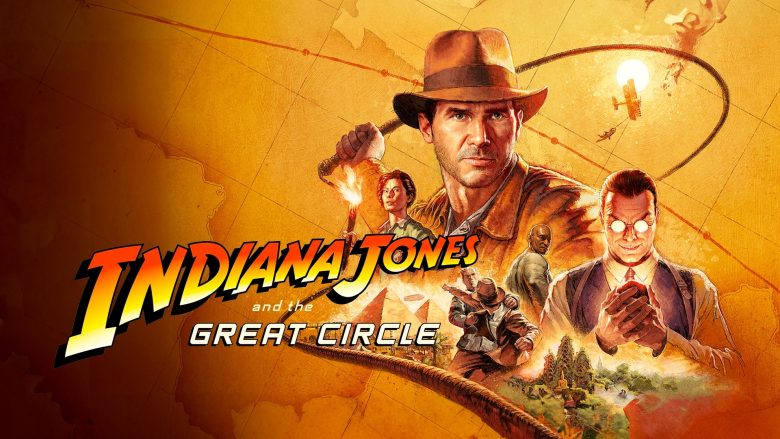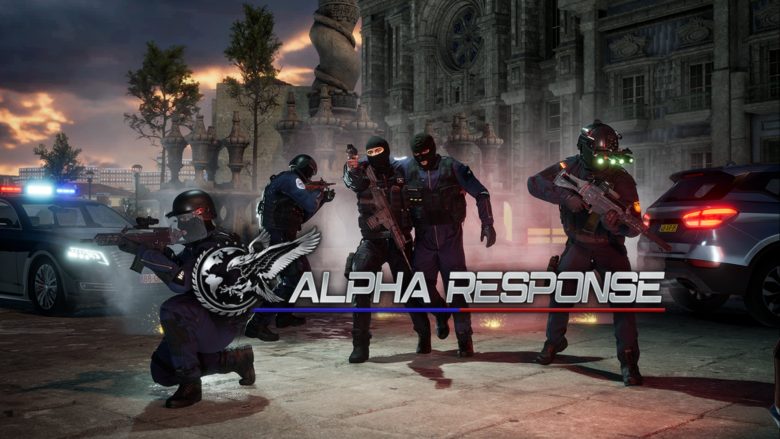A hardcore and badass punk-themed experience reserved for the fearless at heart. Join Cherry’s path of destruction, a furious and vengeful android, as she embarks on a violent, blood-soaked journey to save her creator, the one true love of her life.

Are you on the hunt for a sick, irreverent, and savage Metroidvania? Well, the good news is that we’ve got just the thing for you! Allow us to introduce Cookie Cutter, the inaugural video game from the English indie game studio Subcult Joint LTD.
It’s an action-packed, hyper-violent techno-pop punk Metroidvania with strong action components, where blood, death, and destruction are the order of the day. Irreverent, rough, bloody, unconventional… call it what you will. It’s a blast!
So, without further ado, keep your eyes glued to the screen, warm up your popcorn, and join us on this captivating journey of fury, vengeance, love, suffering, and redemption.
A Leap into the Studios of Subcult Joint LTD
Before we plunge headfirst into the main topic and delve deeper into what Cookie Cutter is, let’s take a brief glimpse into the studios of its brilliant and imaginative creators at the indie game studio, Subcult Joint LTD.
Founded in 2021 in the heart of Brighton, England, Subcult Joint LTD is a fully virtual team, consisting of passionate individuals, artists, and animators from various parts of the world.
Allow us to introduce them briefly. In the team, we have Director Artist Stefano Guglielmana, Level Designer Gabriel Raymond-Roy, Game Designer Filippo Gandini, two Level Artists Matt Lewis and Elio Cacciatore, three Artists Hilary Purnamasari, Stefano Raniolo, and Dan Liimatta, Writer Raffaele Romano, Programmer Francesco Bizzini, Animator Damian Ciancio, Producer Mark Teal, and Nicola Campo and Mindchamber responsible for Audio and SFX and VFX Particles, respectively.

Skilled hands, many artistic minds, goals, aspirations, and a single rule: creativity.
If you think you’re in the presence of a conventional, traditional game studio, well… you’re completely off the mark. We’re not talking about differing ethics or work methods, but rather the distinctive style and foundations, and the unique principles that Subcult Joint LTD employs to carve out its own place within the Metroidvania genre, all the while diverging from the industry’s conventional rules.
The goal and purpose are to do what the team enjoys doing through their own unique approach, reworking the already successful Metroidvania-Action RPG formula, and incorporating distinctive touches, “weird” mechanics and components, their one-of-a-kind storytelling, and a twisted and unconventional art design that blends Japanese Manga-Anime with the punk rock fanzines of the 1990s.
And this is how Cookie Cutter, their debut work, is born: an irreverent, anti-trend, unconventional, and hyper-violent Metroidvania. You will love it, that’s for sure!
As for publishing, the studio has partnered with the experienced American team at Rogue Games, a company led by industry veterans with an extensive gaming portfolio, featuring titles such as The Last Case of Benedict Fox, Dust & Neon, and Homebody. This team positions itself as the ideal gateway for young developers and their most wildest and irreverent video games. It’s easy to see why Rogue Games is the perfect publisher for a project like Cookie Cutter!
Cookie Cutter: The Story of a Lost Love
Cookie Cutter’s narrative hits us from the get-go, metaphorically (not so much in a figurative sense, if you immediately grasp the depth of the writing), like a true punch to the face. Direct, emotionally charged, and brimming with significance, much like the story of the protagonist Cherry.
Dreams, passions, hopes, love, and then… poof, nothing. All reduced to ashes.

But let’s provide a bit of context. In the beginning, there was The Void. The Matter. The Megastructure. A dystopian world, dressed as utopia, with an egomaniac leader hell-bent on uncovering the secrets of the universe. A fictitious, warped dimension that was supposed to be safeguarded by INFONET and regulated by a unique breed of androids known as Denzels. But it was all a lie, a filthy deception.
Two centuries later, the planet is decaying, and the enigmatic Red Seed has been stolen. A renegade mechanic named Raz discovers a mangled android, left for dead, Denzel Cherry clinging to life through sheer willpower. Meanwhile, her creator and the love of her life, Shinji Fallon, has been abducted by the psychopathic leader of a megacorporation, Salem Garbanzos, accused of pilfering a coveted fragment of the sentient energy source that powers the Megastructure – an energy source Salem also needs to bolster his Golden City.
Cookie Cutter’s narrative takes shape with the cadence of Cherry’s words, brimming with resentment and rage. As we can observe, the android labels herself as distinct, a unique creation within the vast sea of daily churned-out mass-produced junk and mediocrity. Cherry is an exceptional Denzel, purposefully crafted to entertain her creator, Dr. Shinji Fallon.

In Cherry’s own words: “Lately I can’t make sense of what I feel anymore,” a sentiment she expresses in the wake of her beloved’s abduction. This implies that Cherry stands apart from the rest of the Denzels; she’s an android with consciousness, sentient, possessing the ability to perceive emotions and empathy. However, as we will soon discover, she isn’t quite adept at controlling these emotions just yet.
This is the heart of the matter. Cookie Cutter relates to us a fleeting love story, something lost that must be retrieved. Two hearts shattered, in dire need of repair. However, it does so through a distinct lens, not through uprightness or serenity, but by means of vengeance, rage, fury, and determination. The very determination with which Cherry is ready to dismantle the entire INFONET, all to bring back the love of her life, safe and sound.
It’s an unapologetic and no-holds-barred story. It’s irreverent, uncompromising, and strikes right at the heart, all the while remaining true to its hardcore spirit. Most importantly, political correctness is not welcome here!
The New Order, The Megastructure, The Deviant
Now that we’ve provided you with an initial glimpse into Cookie Cutter’s narrative and backstories, let’s venture even further into the project by offering additional insights into the context, the setting, and the numerous themes that the developers have addressed within their project.
Cherry’s ordeal unfolds within The Megastructure, a massive, ultra-technological complex that serves as the stronghold of INFONET, the cruel and insatiable organization led by the despotic Salem Garbanzos, the kidnapper of Dr. Fallon.
Cookie Cutter’s setting is characterized by a sci-fi-style ambiance and influence, both in terms of narrative and context. INFONET, as an oppressive and controlling organization, advocates for a new societal order and lifestyle, exerting its iron grip through surveillance and force. In this dystopian realm, Cherry and Dr. Fallon are but victims of a convoluted and diseased system.

And here we delve into the core of Cookie Cutter: its themes. There are numerous, in fact, an abundance of them, with some finding their expression and significance right within our protagonist, Cherry. Others are reflected in the setting, or even within INFONET, which can be seen as symbols of control, consumerism, standardization, and homogenization.
This is where Cherry takes center stage, the emblem of rebellion, of freedom, a survivor. A deviant. An android who defies her mechanical nature to be guided by emotions, empathy, and her most human aspects. She’s the Denzel who’s ready to take on INFONET’s entire armed force from head to toe, all in the name of love.
But then again, Cherry isn’t an ordinary Denzel. She’s conscious, a deviant, sentient, with a human side. She’s… different, from all of this.
Not to mention, of course, the theme of love, translated in this case as a universal, unbridled conception of the path and struggle to attain it, to maintain its integrity, to break free from the chains and imprisonment of a corrupt, oppressive system that seeks to limit one’s freedom. And the complicit and complex relationship between humans and machines, between the created and the creator, a theme of great importance and extensively explored in both cinema and the gaming world. The developers touch on it in an effective, different, and more “human” perspective, where the bond becomes a catalyst for change. As you can see, there are many reflections we could make about the plot of Cookie Cutter and the nature of its themes.
Consequently, you’ll agree with us that saying Cookie Cutter grapples with contemporary and sensitive themes is almost an understatement. However, as you’ll soon come to understand, it’s the perception that truly matters. The emotions we may have experienced could be notably different from your own, and vice versa, just as the themes that have surfaced in this brief analysis. You know, emotions are subjective, much like the themes ingrained in Cookie Cutter. It’s up to you, or us, to interpret them.
Cherry is built different
As we’ve previously revealed, Cookie Cutter is a fast-paced and action-packed Metroidvania. While it shares certain traits with the genre, it has a distinct essence—a rebellious and unconventional spirit, along with a hint of madness that that diverges from the genre’s established conventions and norms.

In essence, we’re faced with a “Subversive Metroidvania” aiming to narrate Cherry’s rage-filled and love-driven quest, her journey to disrupt and dismantle the order and structure of INFONET. Naturally, the term “subversive” can be perceived in two distinct manners: the first, as we’ve explained, pertains more to the narrative aspect, evident and explicit before us. The second is a more implicit and symbolic interpretation, suggesting that Cookie Cutter may aspire to revolutionize the genre, altering not only its content but also its language and form.
In Cookie Cutter, every aspect, every tiny fragment, brims with raw, unconventional, daring, and unapologetic language. There are no concessions to delicacy for the more sensitive souls here, nor will you find an excessively cute kawaii hand-drawn art style (or rather, Cookie Cutter does indeed feature a kawaii art design, but it coexists with violence and irreverence, far from your expectations). The main point of change revolves around the alteration in language, which emerges as one of the central driving forces of the game, profoundly reshaping both artistic expression and the very essence of gameplay itself.

Just as irreverent is the gameplay itself, from the combat system to Cherry’s arsenal of weapons and her ferocity in combat. Consider the weapons you might typically wield to fight enemies. Now, press the reset button. Cherry wields the most unimaginable and bizarre weapons an android could ever conceive, including a colossal mechanical fist, a devastating plasma cannon, a chainsaw, an electric guitar, and even a motorcycle, handling the latter with disarming ease, paradoxically almost comical.
However, it’s when our protagonist unleashes her mechanical fury that combat transforms into a spectacle of death and destruction. This phase is truly unique and significantly alters the rhythm of combat, turning Cherry into a frenzied, invincible killing machine. It’s a visual treat, take our word for it.


Naturally, we’re still talking about a Metroidvania, a video game that has indeed conveyed that feeling of unpredictability and change, but it also shares common ground with the genre’s flagship titles in terms of game structure and level design, such as non-linearity, interconnectedness within the game world, platforming sections, and puzzle-solving, to name a few.
So, what are our expectations? We envision that Subcult Joint LTD has adeptly taken on and integrated these mechanics into Cookie Cutter’s gameplay while preserving its soul – that enthralling punk identity that distinguishes it.
A Jaw-Dropping Art Direction
Two aspects of Cookie Cutter that undoubtedly deserves a mention is the art design and artistic direction, aspects to which the Subcult Joint LTD team have devoted meticulous care from the very outset, almost obsessively.
With a pronounced punk identity that serves a true macro-theme within the game, the exceptional hand-drawn artistic style is perhaps the most distinctive feature of Cookie Cutter, brought to life through top-tier 2D animation. However, the art design doesn’t stop at influencing the periphery, the color palette, tones, and atmosphere – what some might consider the “surrounding” of Cookie Cutter – but extends to the very core of the work, its themes, and, you might say, its very essence.

We could use various adjectives to describe the art design: stylish, captivating, adrenaline-pumping, kawaii, yet unafraid to convey and express violence in its most unadulterated form, adopting a non-conformist artistic language that is far removed from what one might typically expect from a video game within the Metroidvania genre. But as we’ve mentioned before, haven’t we? Cookie Cutter doesn’t seek to be a conventional or classic Metroidvania reference; it’s setting new standards.
However, the keen-eyed readers might have already noticed interesting artistic crossbreeds, as we’ve mentioned, drawn from the realms of sci-fi and even cyberpunk. The artistic direction, and more specifically, the storyline, as shared by the developers, draws inspiration from significant Japanese manga and a director of Quentin Tarantino’s caliber. These influences have significantly permeated even the environmental design and, in Tarantino’s case, perhaps its hyper-violent character.
Cookie Cutter translates all of this, as we’ve explained before, into the realm of animations, featuring mind-blowing visual and auditory effects, not to mention the stunning design of enemies and bosses. And we mustn’t overlook the spectacularly violent finisher animations.


Techno-Pop-Punk Delirium
Before we wrap up, let’s take a moment to explore the sound, with a particular focus on the OST. In Cookie Cutter, the music appears to synchronize with Cherry’s every step, as though it embodies the melodies of the symphony of death and destruction that accompany the protagonist’s journey.
As previously mentioned, the sound design seems to have been meticulously honed to the finest detail. The same level of care has evidently been directed toward the compositions that form the game’s soundtrack. In this regard, there are various influences we can identify, as observed in the trailers and in-game footage, including a prominent synth punk contamination, along with punk rock and pop punk vibes, contributing an additional layer to the production.
Of course, it’s premature to pass even a preliminary judgment on the OST at this stage, but from what we’ve experienced… or rather, heard, it has given us a sense of something very positive and promising.
The Price of Love
Cookie Cutter is undoubtedly one of the upcoming Metroidvanias we’re most eagerly anticipating, and we have high expectations, both based on what we’ve seen so far and the promise of the overall experience it holds.
In recent weeks, development has entered its climactic phase, and as disclosed by the developers on X, we’re on the brink of the moment we’ve all been waiting for—the imminent announcement of the game’s release date.
Cookie Cutter is currently scheduled for a PC release, with Subcult Joint LTD reiterating their intentions to bring the game to consoles. The most plausible scenario is that the game will initially launch on PC rather than having simultaneous releases on all platforms. However, we’ll have to await further updates to understand the developers’ specific plans.
At this point, we’d like to remind you to stay tuned, following us for the latest updates on Cookie Cutter news, and visit the Rogue Games website for additional information and more project details.
And, before we conclude in our usual fashion, we ask you…what would you do for love?
That’s all for today. Talk to you soon.


